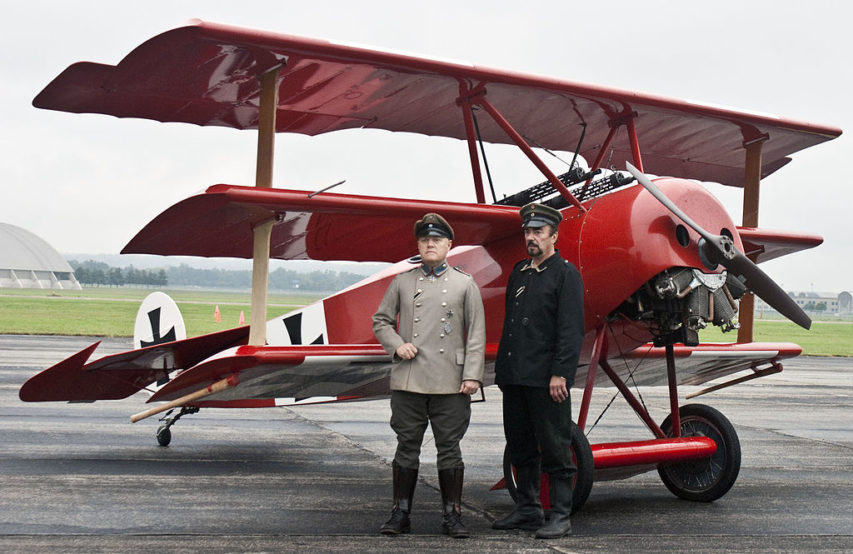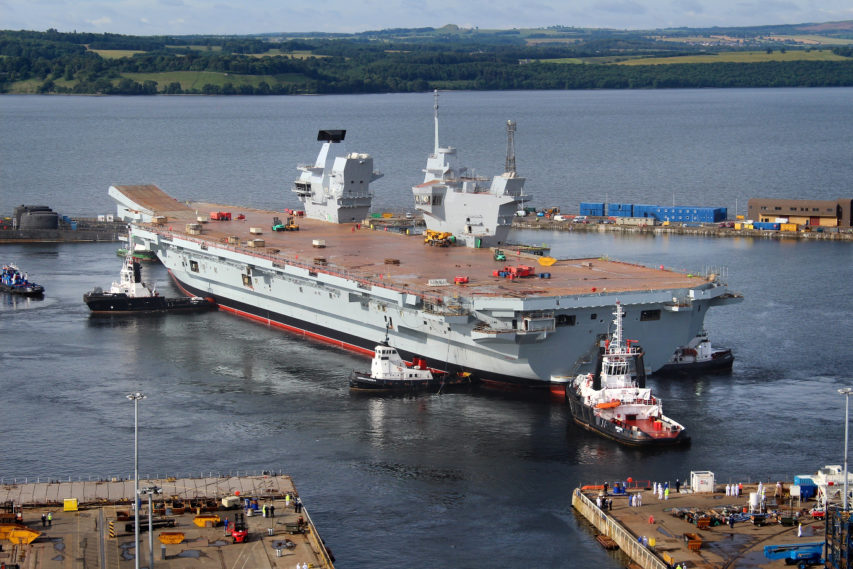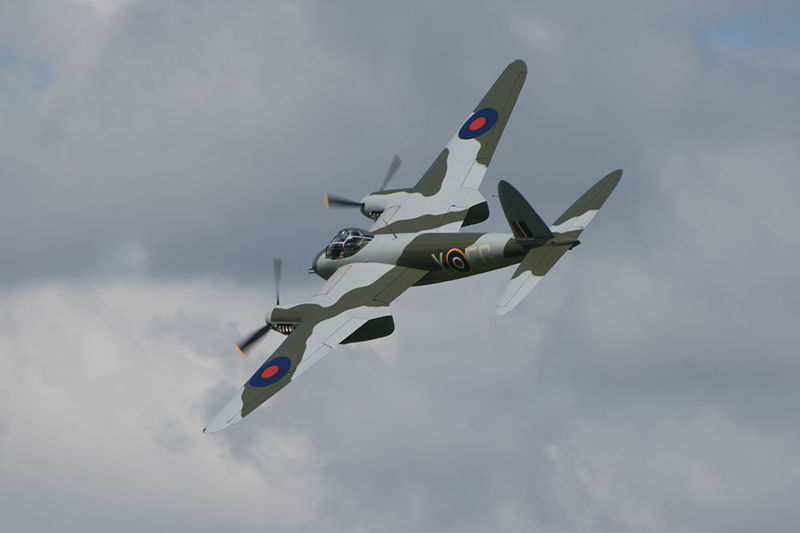Published on 25 May 2017
This week 100 years ago, Germany is flying concentrated bomber attacks with multiple Gotha bombers on British cities – causing more damage than any Zeppelin raid before. In the Middle East, T.E. Lawrence and his allies from the Arab Revolt are on the march while on the Western Front, the last battles of the Nivelle Offensive come to an end.
May 26, 2017
German Bombers Over Britain – Arab Revolt On The Advance I THE GREAT WAR Week 148
May 14, 2017
Junkers Fighter Planes – Whiter Feather Movement – Swiss Invasion Plans I OUT OF THE TRENCHES
Published on 13 May 2017
Chair of Wisdom Time! This week Indy talks about Junkers fighter planes, the plans for an invasion of Switzerland and he Whiter Feather Movement.
May 13, 2017
The Physics of World War 1 Planes feat. The Great War Channel
Published on 29 Apr 2017
April 13, 2017
The Future of Airliners? – Aurora D8
Published on 31 Mar 2017
Get 10% off Squarespace by following this link: http://squarespace.com/realengineering
Get your Real Engineering shirts at: https://store.dftba.com/collections/real-engineering
Why Are Plane Wings Angled Backwards?:
https://www.youtube.com/watch?v=GXFpLnPpDtY
Why Are The Dreamliner’s Windows So Big?:
https://www.youtube.com/watch?v=7-I20Ru9BwM
April 12, 2017
QotD: Different interpretations of cause and effect
On December 8, 1979 two Zairean air-force jets approached the airport in Kinshasa, the capital what is now the Democratic Republic of the Congo. The tower radioed the pilots, telling them they couldn’t land; the air-traffic controllers were concerned about low visibility.
But when the pilots were told that they “couldn’t land,” they didn’t think, “I can’t land right now,” they thought, “I can’t land, ever.” So they ejected from their planes, letting two perfectly good Mirage jets crash into the Atlantic Ocean.
These men weren’t fools. Idiots don’t fly jets. It’s just that, for an instant, they were thinking according to an entirely different set of rules about how life works. “Can’t” means “never, ever, possible” according to these rules — not “wait an hour,” or “find a different runway.” And so they hit the eject button.
Longtime readers may recall I got this story from a great book, David Lamb’s The Africans. Lamb went on to observe that many Africans have a slightly different interpretation of cause and effect. In the West, the lesson the average person would take from a near-fatal car crash at high speeds on a hairpin turn would be “Man, that was close. I better not try that again.” But in Africa, Lamb writes, “if an oncoming car has to swerve off the road to avoid his vehicle, and there are no collisions or injuries, the African does not say, ‘Next time I’d better not do that.’”
I’ve heard similar stories about drivers throughout the developing world, particularly in Latin America, where traffic accidents and fatalities are much higher than in more advanced nations — even though the rate of car ownership is much lower.
Jonah Goldberg, “Is Trump Really the Anti-PC Warrior His Fans Make Him Out to Be?”, National Review, 2015-08-15.
April 7, 2017
Some people build boats as a hobby … this guy built a Fokker Dreidecker I
At The Register, the story of Dr Peter Brueggemann’s quest to build a close replica of the kind of WW1 aircraft made famous by the Red Baron:

World War I Dawn Patrol Rendezvous DAYTON, Ohio — Reenactors stand in front of a Fokker Dr. I during the World War I Dawn Patrol Rendezvous at the National Museum of the U.S. Air Force, 8 August 2009. (U.S. Air Force photo, via Wikimedia)
A German orthopaedic surgeon in Norfolk has spent £70,000 building himself a flyable full-size replica of the Red Baron’s Fokker Triplane.
Dr Peter Brueggemann built the First World War-era aircraft by hand – even though when he started he couldn’t fly, as ITV News reported.
The bright red Fokker Dreidecker I (German for “three-decker”, or triplane) was built to a set of technical drawings prepared by an American aviation fanatic in the 1970s. No original Dr.Is exist, though a number of replicas have been put together during the 20th century.
Dr Brueggemann even acquired the title of baron from the Principality of Sealand, ready for when his Fokker makes its planned first flight this summer.
He told the telly station: “Being a surgeon has certainly helped and I have used surgical equipment like needles and forceps when stitching materials to the ribs of the plane.”
[…]
Fokker copied the original Dr.I design from British company Sopwith. During the early stages of air fighting in WWI, rate of climb was deemed vitally important. As aeronautical science was still in its infancy – aircraft were built from plywood and canvas, while the relatively primitive rotary engines of the day were only capable of around 110hp – the easiest way of increasing the amount of lift available was to add more wings.
First seeing action in early 1917, the Sopwith Triplane was an instant success. However, a captured example shown to Anthony Fokker, prompting German development of their own version. The first pre-production Dr.I was issued to a frontline unit in August 1917 and proved an instant hit. German fighter squadron commander Manfred von Richthofen recommended the Dr.1 be issued to as many frontline units as possible.
February 21, 2017
HMS Queen Elizabeth to be commissioned in May

The Royal Navy’s largest ever warship HMS Queen Elizabeth is gently floated out of her dock for the first time in Rosyth, Scotland in July 2014. In an operation that started earlier that week, the dry dock in Rosyth near Edinburgh was flooded for the first time to allow the 65,000 tonne aircraft carrier to float. It then took only three hours to carefully manoeuvre HMS Queen Elizabeth out of the dock with just two metres clearance at either side and then berth her alongside a nearby jetty. Teams continued to outfit the ship and steadily bring her systems to life in preparation for sea trials in 2016. The dock she vacated will be used for final assembly of her sister ship, HMS Prince of Wales.
Source: Wikimedia.
The Royal Navy’s newest aircraft carrier is scheduled to be brought into commission in May this year:
The first new Royal Navy aircraft carrier in thirty years is nearing sea trials. After a brief absence from the world of fixed-wing naval aviation the Royal Navy’s brand new flattop HMS Queen Elizabeth and its sister ship, Prince of Wales, will soon sail the seas, their decks full of new F-35 Joint Strike Fighters. The result will be the most powerful “Senior Service” in generations.
The Royal Navy was one of the first naval warfare forces to explore the nascent world of naval aviation. HMS Argus, commissioned in September 1918, was arguably the first aircraft carrier with a full-length flight deck. The UK was one of the major aircraft carrier powers throughout World War II, and continued to operate carriers in the postwar period.
By 1982, the Royal Navy had committed to building three Invincible-class carriers. Somewhat scaled back from earlier ships, and dwarfed by the U.S. Navy’s Nimitz-class carriers, the Invincible class was more suited to antisubmarine warfare duties against the Soviet Navy, keeping the sea lines of communication between North America and Europe clear in the event of World War III. The Invincibles could sail with a complement of up to twenty-two aircraft, typically a mixture of Sea Harrier fighters and Sea King helicopters.
The 1982 Falklands War demonstrated the shortcomings of relying upon such small carriers. HMS Invincible, along with the older HMS Hermes, struggled to provide early warning and combat air patrol over the UK task force sent to reclaim the islands, and were unable to prevent Argentine air power from sinking six friendly warships and supply ships and damaging another nine.
In 2007, despite the general downturn in the size and scope of the navy, plans were announced in 2007 to construct two brand-new aircraft carriers. Each would be stocked with brand-new F-35 Joint Strike Fighters and helicopters, and would be up more than three times larger than their predecessors by displacement. The carriers, Queen Elizabeth and Prince of Wales, would be the largest warships ever built by the UK, bigger even than the World War II battleship HMS Vanguard.
Unfortunately, in order to free up funding for the new carriers the older ships had to be retired, and decommissioning of the Invincible class carriers and their Sea Harrier jets during the 2010s was a huge blow to the Fleet Air Arm. The three warships were broken up for scrap, and the remaining Harrier jets, which by now included RAF Harriers, were purchased by the U.S. Marines to provide spare parts for their own fleet of AV-8B Harriers.
January 5, 2017
Canada’s military-industrial complex
Ted Campbell briefly outlines the three tiers of military logistics then discusses the most controversial tier, the national industrial base, in more detail:
Behind it all, unseen, misunderstood, unloved and, in fact, often actively disliked is the national defence industrial base.
There are a great many people, including many in uniform, who object to the cost ~ fiscal and political ~ of having a defence industrial base. Many people suggest that a free and open market should be sufficient to equip all friendly, and the neutral and even some not so friendly military forces.
They forget, first of all, that the defence industries of e.g. America, Britain, France, Germany and Israel are ALL heavily supported by their government and, equally, heavily regulated. It is not clear that we will always be in full political accord with those upon whom we rely for military hardware? What if one country wanted, just for example, to gain an advantage in a trade negotiation? Do you think they might not “decide” that since the government (a minister of the crown) has threatened to use military force against First Nations who protest against pipelines that they will not sell us certain much needed military hardware or licence its use in Canada?
It is always troubling when we see the costs of military hardware increase at double or even triple the general rate of inflation for, say, cars or TV sets or food and heating fuel, but that is not the fault of the Canadian defence industries … it is, in fact, the “fault” of too little competition in the global defence industry market: too few Australian, Brazilian Canadian and Danish defence producers, too many aerospace and defence contractors merged into too few conglomerates that control too much of the market. A robust Canadian defence industrial base, supported by extensive government R&D programmes and by a steady stream of Canadian contracts would help Canada and our allies.
[…]
I am opposed to government supported featherbedding by Canadian unions and companies but we do need to pay some price for having a functioning defence industrial base … the costs of our new warships, for example, are, without a doubt, higher than they would be if we had bought equivalent ships from certain foreign yards, but we need to be willing to pay some price for having Canadians yards that are ready and able to build modern warships when needed; ditto for aircraft, armoured vehicles, radio and electronics, rifles and machine guns, cargo trucks and boots and bullets and beans, too. AND, we need a government that will, aggressively, support that defence industrial base with well funded R&D programmes and by “selling” Canadian made military equipment around the world.
It’s one thing to accept that you’ll need to pay a premium over market cost for built-in-Canada equipment that can’t also be sold to other customers. What is disturbing is discovering that the premium can be up to 100% of the cost for equivalent non-domestic items. For example, this was reported in a CBC article in 2014:
Britain, for example, opted to build its four new naval supply ships much more cheaply, at the Daewoo shipyard in South Korea. The contract is for roughly $1.1 billion Cdn. That’s for all four. By contrast, Canada plans to build just two ships, in Vancouver, for $1.3 billion each. So Canada’s ships will be roughly five times more costly than the British ones.
But there’s a twist. Canada’s supply ships will also carry less fuel and other supplies, because they’ll be smaller — about 20,000 tonnes. The U.K. ships are nearly twice as big — 37,000 tonnes. Canadians will lay out a lot more cash for a lot less ship.
Everything is more expensive to build domestically if you don’t already have a competitive market for that item. The federal government’s long-standing habit of drawing out the procurement process makes the situation worse, as the costs increase over time (but the budget generally does not), so we end up with fewer ships, planes, tanks or other military hardware items that arrive much later than originally planned.
December 15, 2016
“Rebuilding” a Mosquito
Robert Beckhusen on the ongoing attempt to bring a long-ago crashed de Havilland Mosquito back to life:

De Havilland DH-98 Mosquito at the Ardmore Airport de Havilland Mosquito Launch Airshow, 2012 (via Wikipedia)
The de Havilland Mosquito was arguably the best British plane of World War II, the war’s most effective fighter-bomber and one of the most versatile military planes ever built. That’s why it’s strange so few of the wooden, twin-engine machines appear at air shows.
There are currently only three airworthy Mosquitos in the world.
A group of British engineers are trying to change that by bringing a Mosquito back from the dead. Since 2012, the U.K.-based People’s Mosquito project has raised funds and begun working to restore an ex-Royal Air Force Mosquito which crashed in 1949, was buried and then recovered 61 years later.
“A much beloved friend of ours, and our patron, Capt. Eric ‘Winkle’ Brown, once said that three British aircraft were preeminent in World War II,” Ross Sharp, the People’s Mosquito’s director of engineering told War Is Boring. “One was the Spitfire, the other was the Lancaster and the third was the Mosquito, and if you had to rank them, you’d put the Mosquito first.”
“That was due, I think, because it performed so many roles and performed them superbly.”
[…]
On Feb. 14, 1949, the NF.36 fighter RL249 suffered failures in both engines after takeoff and crashed near RAF Coltishall in Norfolk. Sgt. W.B. Kirby, the plane’s navigator, later died from his injuries. RL249’s remains were recovered in 2010, but the pieces are almost entirely unusable.
Instead, the People’s Mosquito team is building — largely from scratch — a Mosquito FB.VI variant, a highly-configurable fighter-bomber. The plane will thus be a “data plate restoration,” meaning the airframe, wings and engines will be fresh, but it will also contain some non-structural bits from the original RL249.
The original Mosquitos did not contain data plates. But that’s not necessary for the team to get the finished aircraft certified as a restoration.
“Providing you possess everything that is left of that aircraft, legally you are in possession of what our civil aviation authorities call ‘the mortal remains’ — that’s the technical term — and you can then restore it,” Sharp said.
“It’s going to be mostly new parts, of course, which in a predominantly wooden aircraft like the Mosquito is vital.”
November 27, 2016
Night Combat – Tank Hunters – Airplane Detection I OUT OF THE TRENCHES
Published on 26 Nov 2016
Another exciting episode of Out of the trenches this time featuring questions about German anti tank tactics, night combat, the detection of enemy aircraft prior to radar and more.
September 25, 2016
Galicia’s role in WWI (Live from Lviv) – Handguns for Pilots – Fight or run I OUT OF THE TRENCHES
Published on 24 Sep 2016
Sitting in the Chair of Temporary Insanity, Indy talks about Galicia’s big role in war on Location, if Pilots were issued guns, and a story from a viewers great grandpa.
September 11, 2016
Anthony Fokker – Japanese Army – Semi-Auto Rifles I OUT OF THE TRENCHES
Published on 10 Sep 2016
It’s time for the chair of wisdom again and of course Indy answering your questions about World War 1.
May 27, 2016
Cutting Germany’s Wings- The Dawn Of The Air Force I THE GREAT WAR Week 96
Published on 26 May 2016
The age of the solitary flying Ace is coming to end this week as the French are demonstrating what an Air Force can do. Equipped with Nieuport 11 fighters, they give the Germans a hard time above Verdun. On the ground, the Germans still obliterate whole battalions with their artillery but cannot gain any ground themselves. The Austrian offensive in Italy is still advancing and Luigi Cadorna is quickly scraping together troops for a defence.
April 8, 2016
Zeppelins over Britain – Terror in the Skies I THE GREAT WAR Week 89
Published on 7 Apr 2016
As the other fronts are relatively quiet, the war is taken to the air. Zeppelins bombard Britain, the Italian and Austro-Hungarian air forces were fighting on the Italian Front and Greece was bombarded. The British and Greek civilians were now too casualties of this war with no end in sight. Though the Kaiser thinks the decision will be made at Verdun in the near future.
February 9, 2016
Zeppelins – Majestic and Deadly Airships of WW1 I THE GREAT WAR Special
Published on 8 Feb 2016
Zeppelins pioneered the skyways, could fly long distances and reached heights like none of the British fighter-interceptor aircraft before. Because of that, they were used for scouting and tactical bombing early in the First World War. In this special episode we introduce these majestic floating whales and their usage in WW1.



